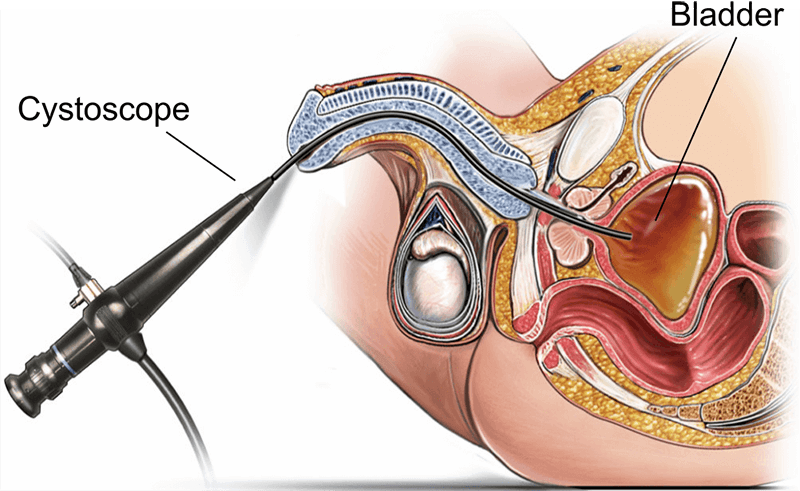
20 Jun The Complete Guide to Cystoscopy
Firstly we should clarify: There are two common types of cystoscopies. One being performed using a rigid cystoscope (referred to as a cystoscopy) which is done in hospital under a general anaesthetic. The other type is performed using a flexible cystoscope (referred to as a flexible cystoscopy) which is usually performed in the rooms as an outpatient procedure.
For a more detailed guide to Cystoscopy: see our attached PDF for Flexible Cystoscopy and Cystoscopy for more information.
Cystoscopy is a common medical procedure in Australia that involves the examination of the inside of the bladder using a thin tube with a camera attached to it. Here are some of the commonly asked questions about cystoscopy we see here at the clinic:
Why do I need a cystoscopy?
Cystoscopy is a diagnostic tool used to investigate urinary problems such as frequent urination, painful urination, blood in the urine, or abnormal urine tests. In our practice we find that Cystoscopy is used to identify and diagnose conditions such as bladder stones, bladder cancer, urinary tract infections, and enlarged prostate glands.

How is the procedure performed?
Dr. Paul Cozzi performs a cystoscopy as an inpatient procedure, meaning you will be admitted to the hospital. The procedure involves the insertion of a narrow tube through the urethra into the bladder. The tube is equipped with a camera that captures images of the bladder’s interior, allowing the doctor to examine the bladder wall and look for any abnormalities.
Is cystoscopy painful?
This procedure is performed under general anaesthetic so you will not feel any pain during the procedure. However after the procedure you may feel a slight stinging sensation when you urinate, but this should only last a day or two.
Are there any risks or complications associated with cystoscopy?
As with any medical procedure, there are risks associated with cystoscopy. However, these risks are rare and typically minor. The most common complications include urinary tract infections, bleeding, and difficulty urinating.
How long does the procedure take?
The length of the procedure depends on the reason for the cystoscopy and any findings during the examination. Generally, the procedure takes about 15-30 minutes.
Will I be awake during the procedure?
No. A cystoscopy is usually performed under a general anaesthetic, meaning you will be asleep.
What should I expect after the procedure?
After the procedure, patients may experience some discomfort or pain while urinating. We recommend drinking plenty of fluids to help flush out the bladder and reduce any discomfort. Patients may also notice some blood in their urine, which is normal and should subside within a few days.
When can I return to work after a cystoscopy?
Patients can typically return to work the day after the procedure, but this may depend on the nature of their job and any discomfort they may experience.
Can I drive myself home after the procedure?
No. You will someone to drive you home and stay with for 24 hours whilst you fully recover from the effects of anaesthetic.
How often do I need to have a cystoscopy?
The frequency of cystoscopy depends on the individual’s medical condition and the findings of previous examinations. We recommend that patients with bladder cancer have regular cystoscopies to monitor their condition and detect any changes or abnormalities.
Takeaway
In conclusion, this guide has provided a comprehensive overview of cystoscopy, a crucial urological diagnostic procedure. It covers the purpose, preparation, procedure, risks, and benefits. Cystoscopy allows for direct visualisation of the urinary tract, bladder and urethra, aiding in the diagnosis and treatment of various conditions. While risks exist, advancements in technology and techniques have improved accuracy and patient comfort. It is important to consult healthcare professionals for personalized advice.
For a more detailed guide to Cystoscopy: see our attached PDF for Flexible Cystoscopy and Cystoscopy for more information.




No Comments